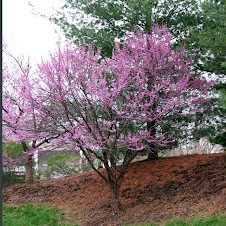What do Great Thinkers have to do with St. Francis of Asissi and saints for the garden?
It may be cold outside, but my fellow writers at Suite101 generate warmth with their writing.
Tel Asiado (
Great Thinkers topic) recently wrote two polls -
Medieval Thinkers and
19th Century Scientists - which kept many of us on our toes. To vote, we needed one out of five possible choices. Some of us went on to justify and expand on our choices.
How do Great Thinker polls relate to St. Francis of Asissi and saints for the garden? I argued with Tel that Francis was a mystic and not a thinker; she rejoined with her definition of Francis as thinker.
He was one "
who shaped intellectual life during the middle ages - philosophical, religious and political thoughts central to that point in time." And her final argument that got me to yield, "
he brought monastic life to a new level of humility that hadn't existed before in thought, word and deed."
Ultimately, the discussion got around to St. Francis and garden statues. Tel, being an Australian, has never seen one. I'm a great fan of this monk, so friends seem to think I need statues of him!
Francis garden statues and Francis as the "patron saint of ecology" are relatively new.
Earth Day and the ecology movement as we know it began in 1970, and earth people and gardeners probably latched on to Francis shortly afterwards. We utilized Francis mythology, springing up after his death with publication of
Fioretti (The Little Flowers), a collection of legends and folklore about him.
Other
saints for the garden have followed
Francis: Isadore, Dorothy, Barbara, Elizabeth of Hungary, and
Fiacre. The impetus for these garden patrons was probably the little paper booklet
Saints in My Garden (about 1970) by Adelma Grenier Simmons, now deceased, founder of Caprilands Herb Farm nr. Danielson, CT.






















